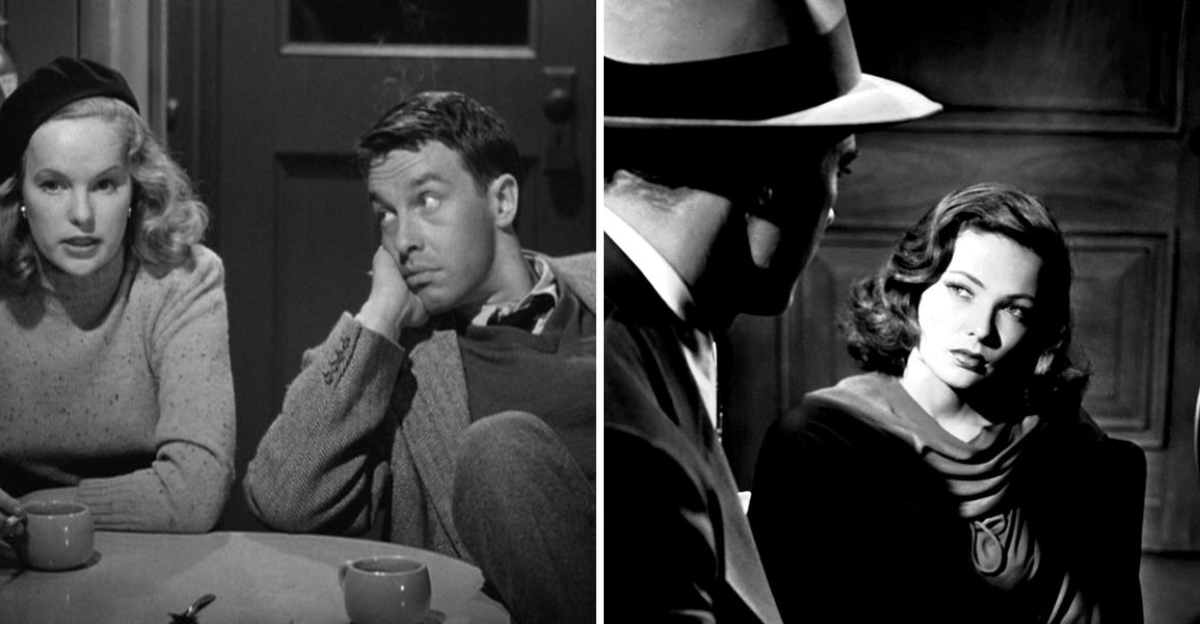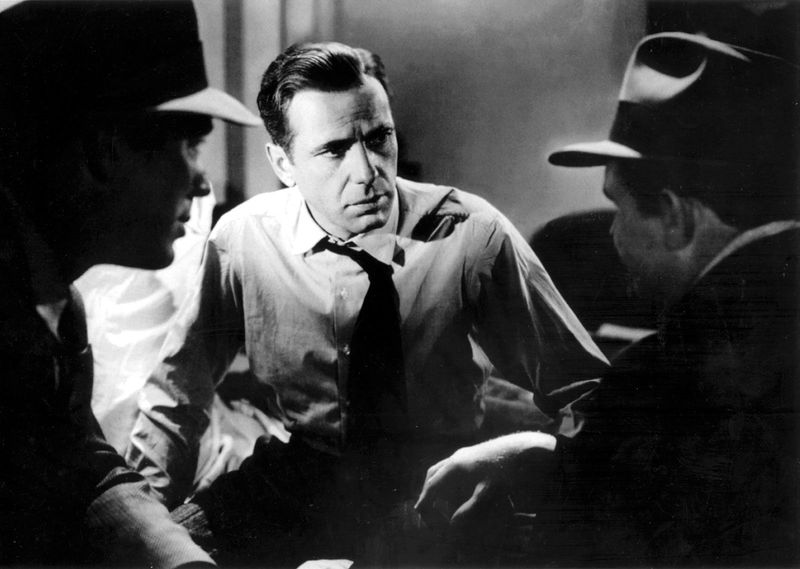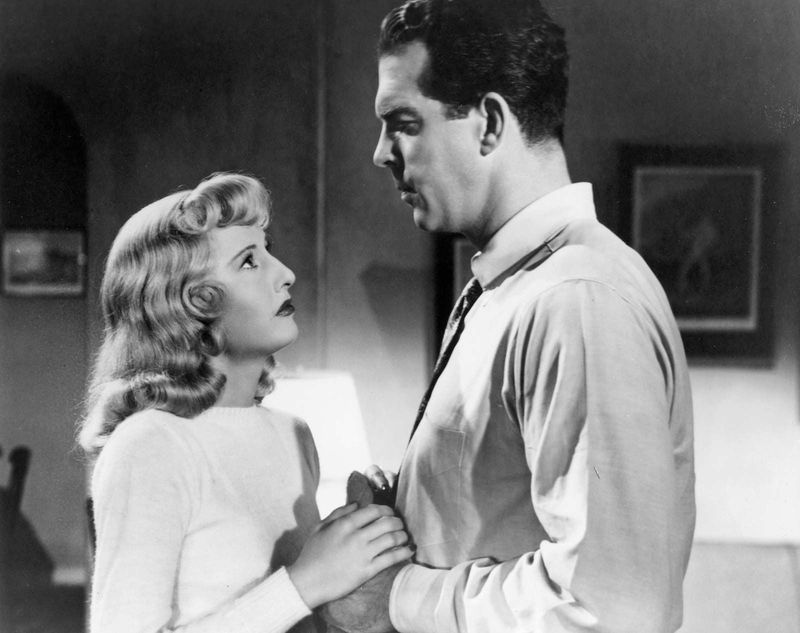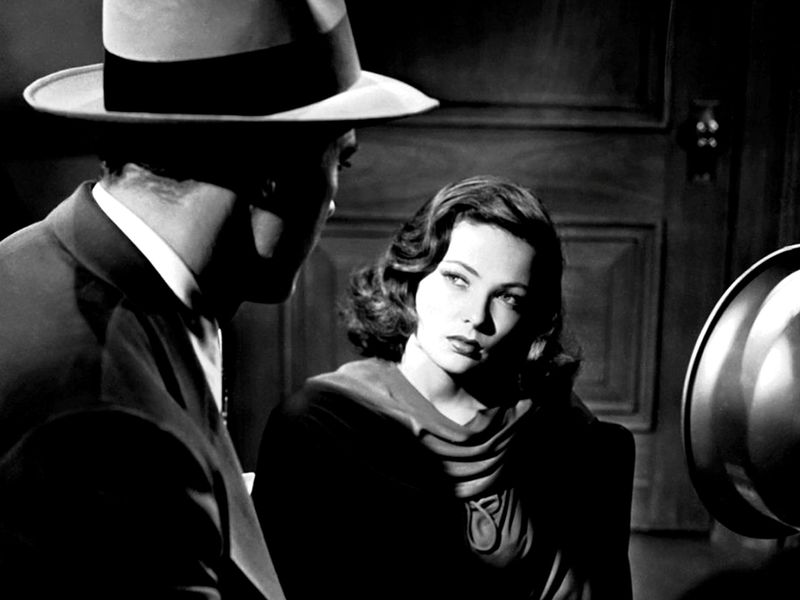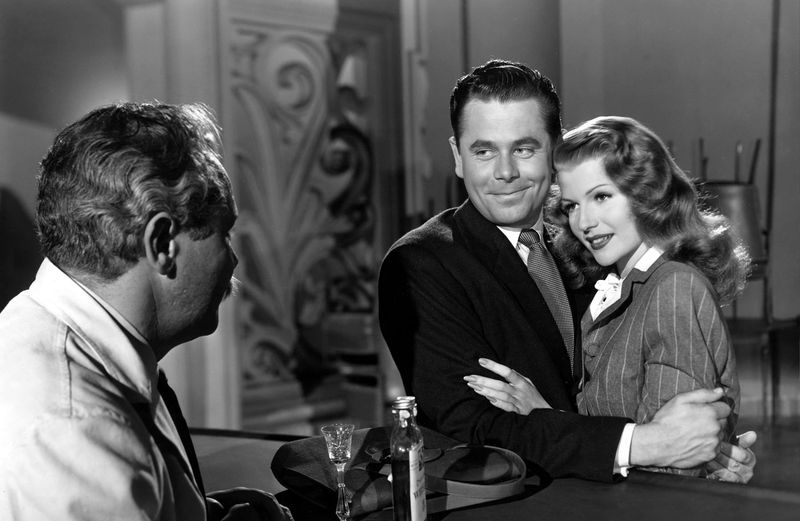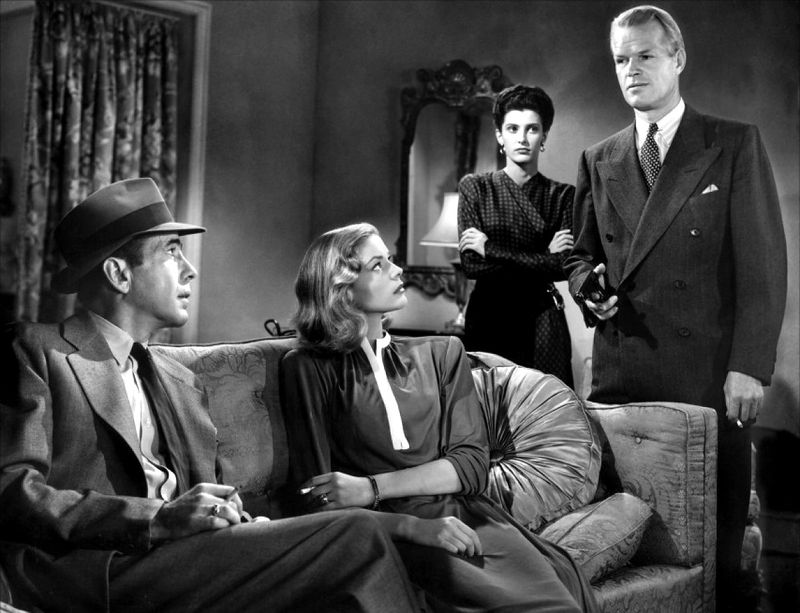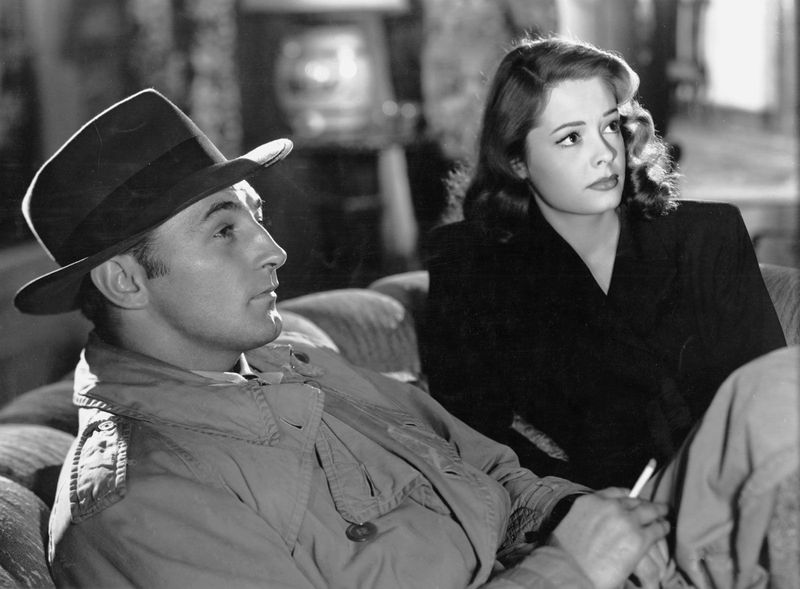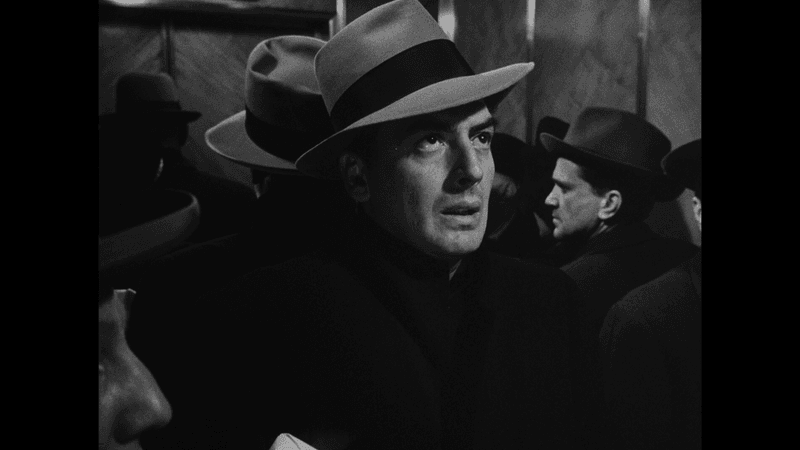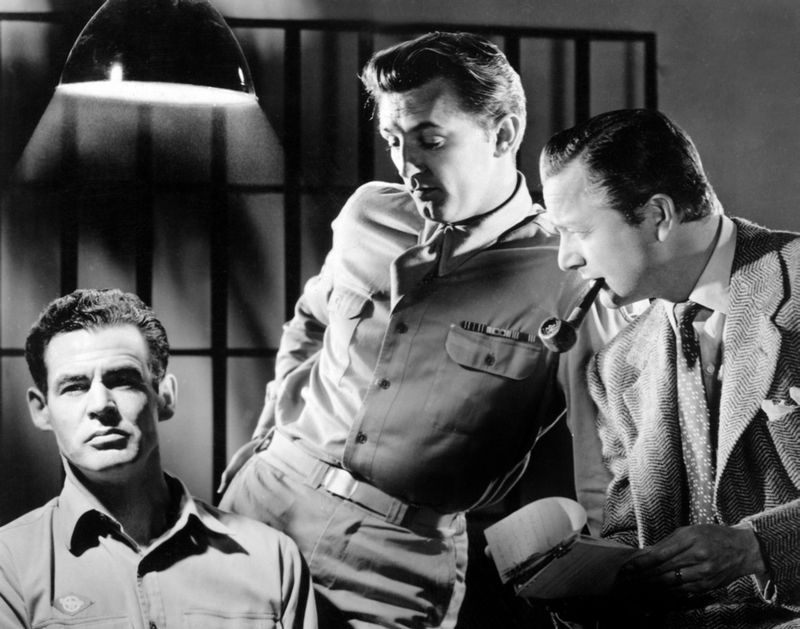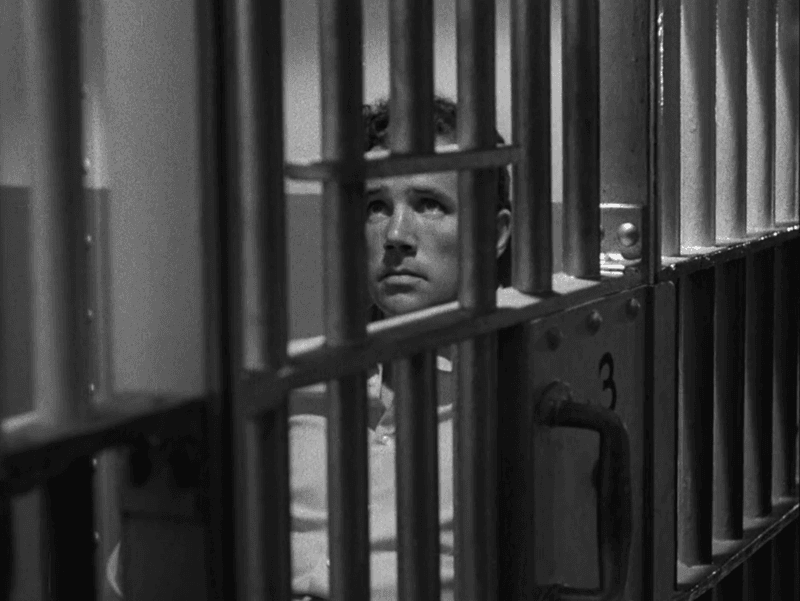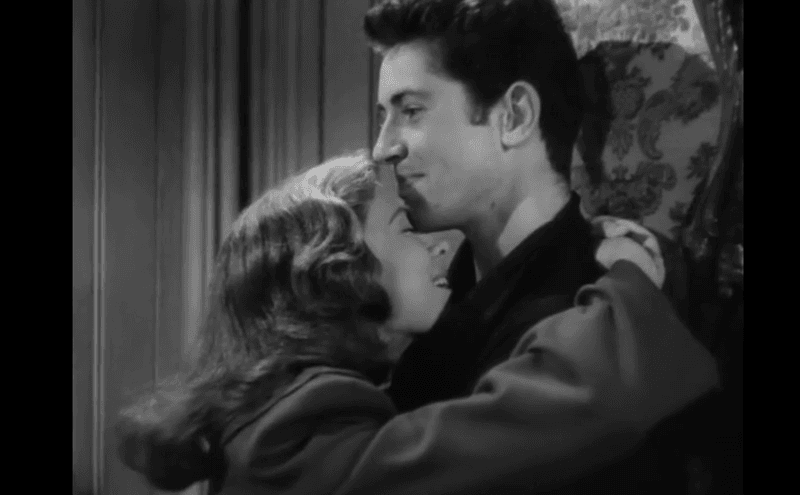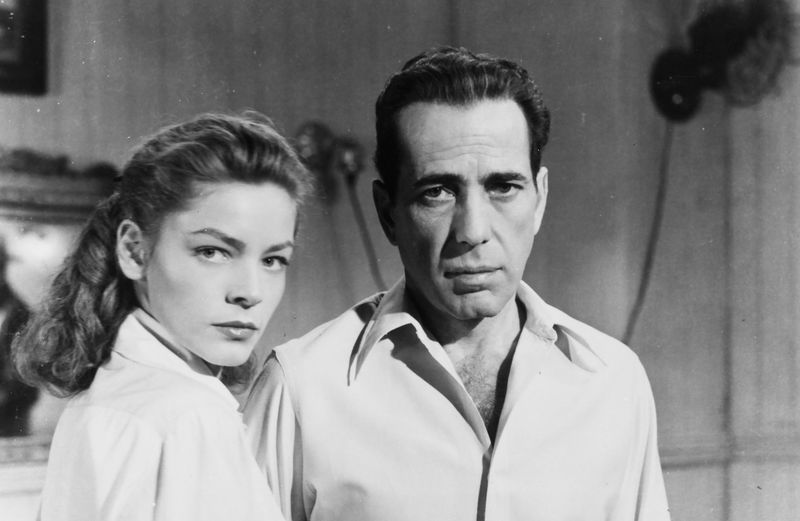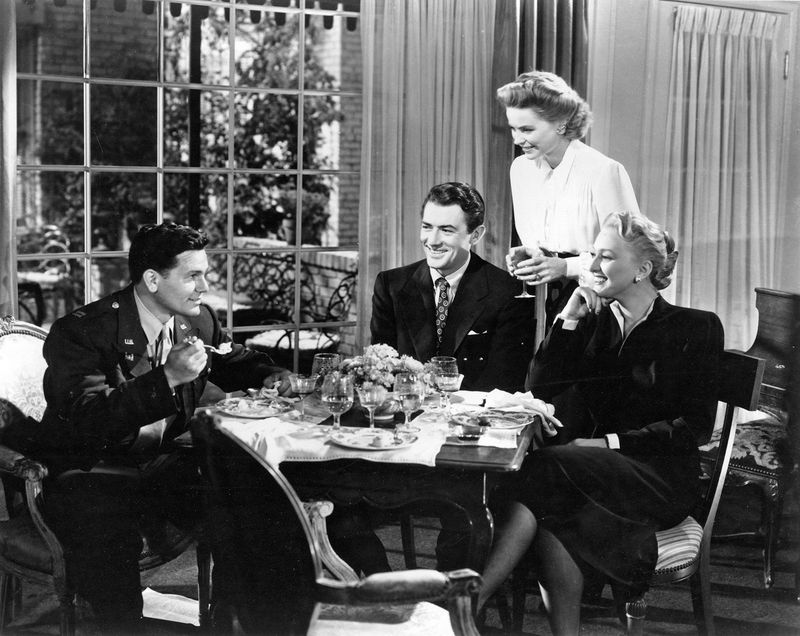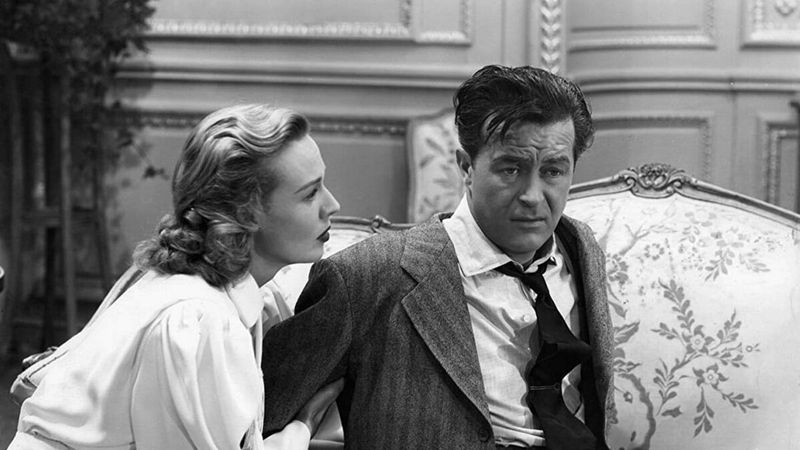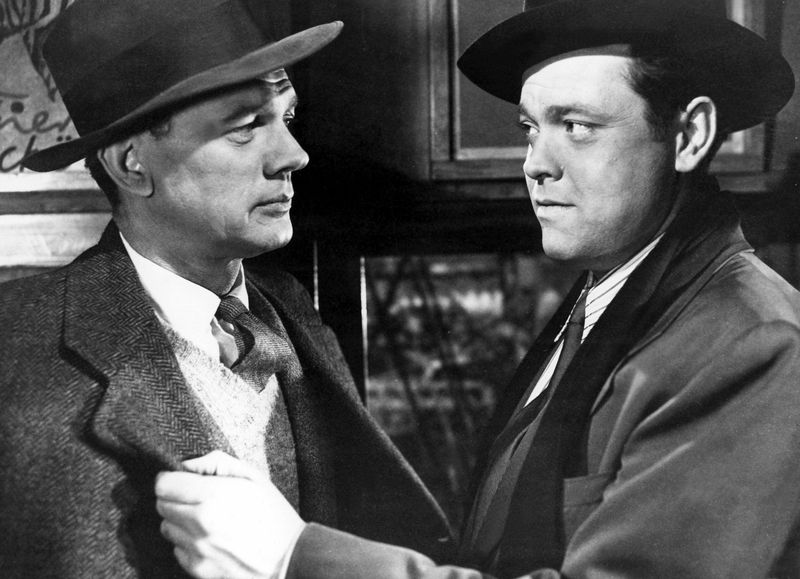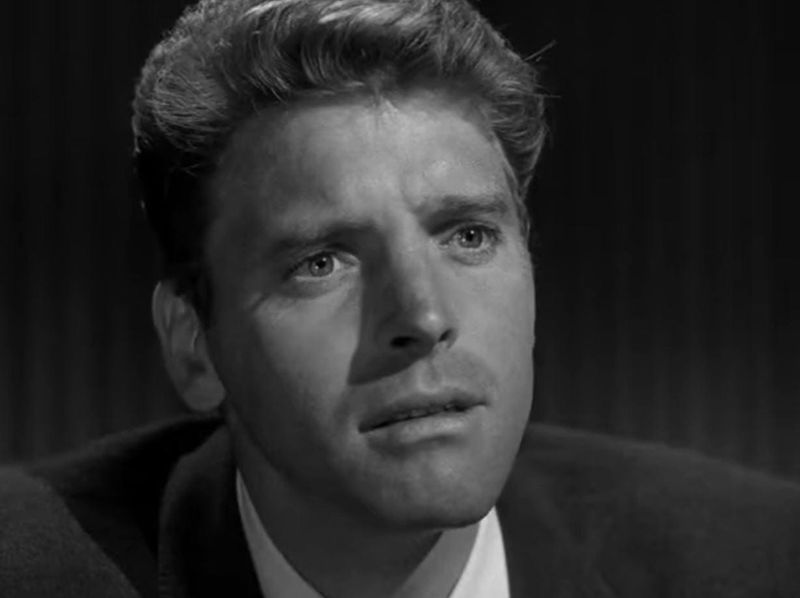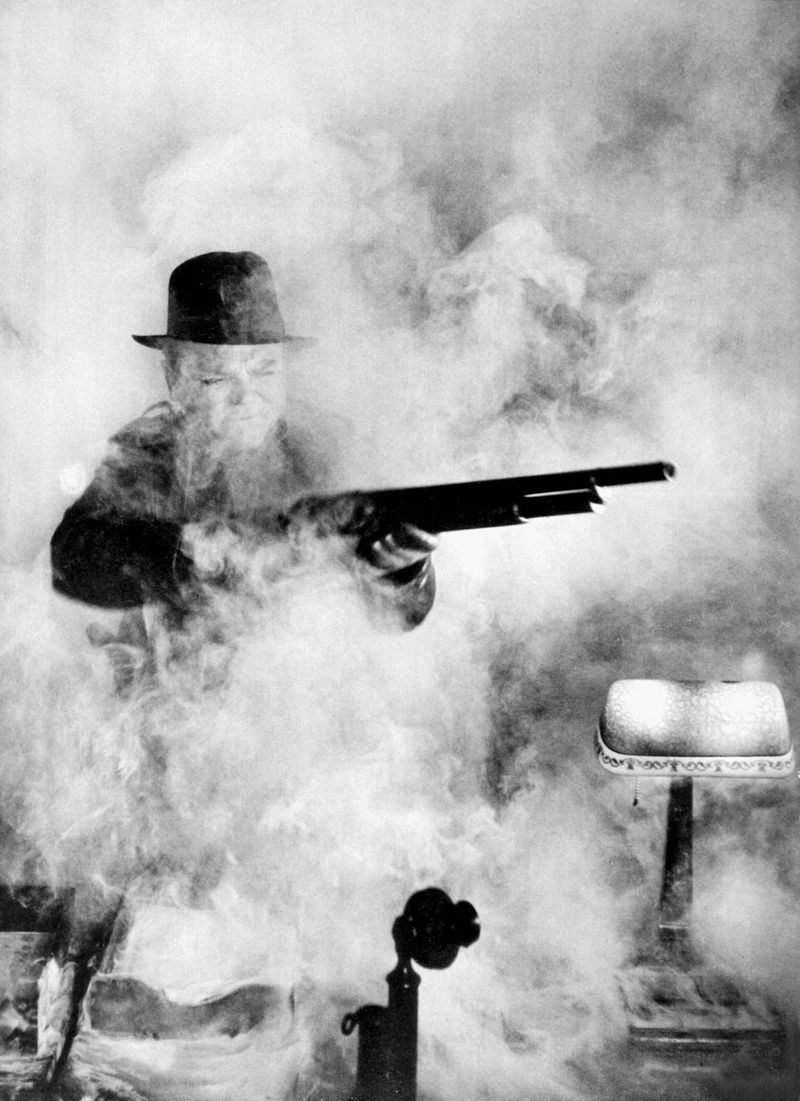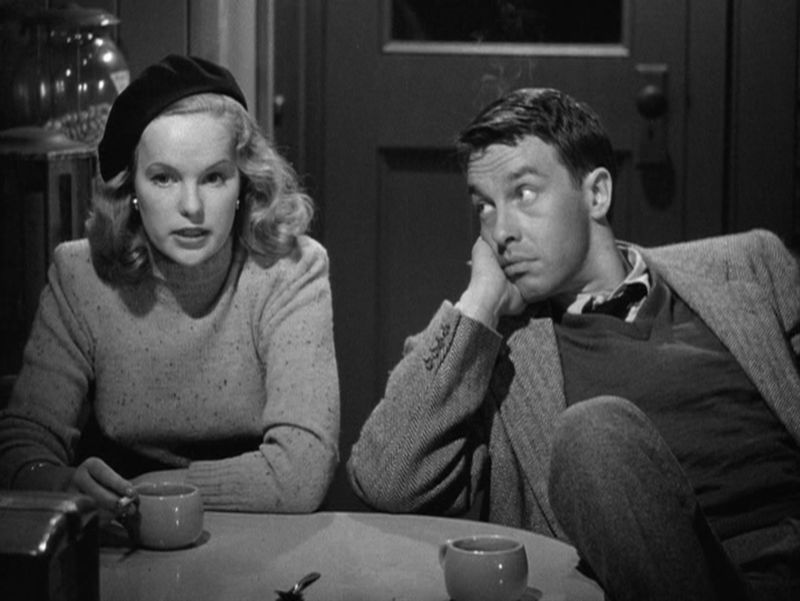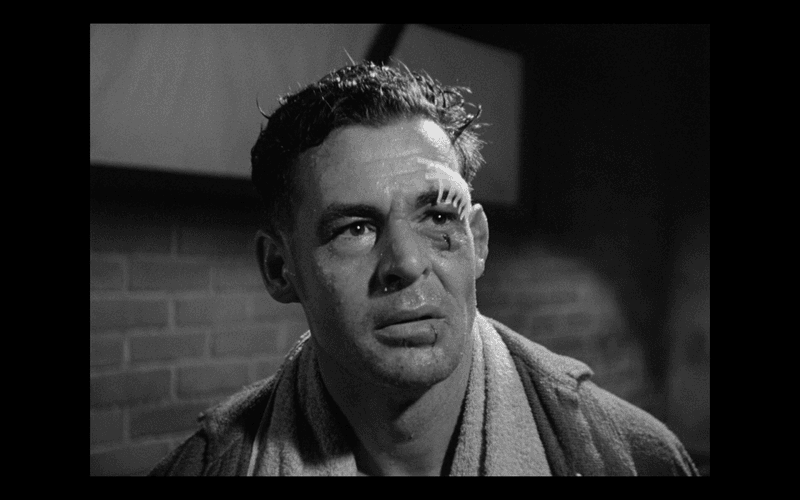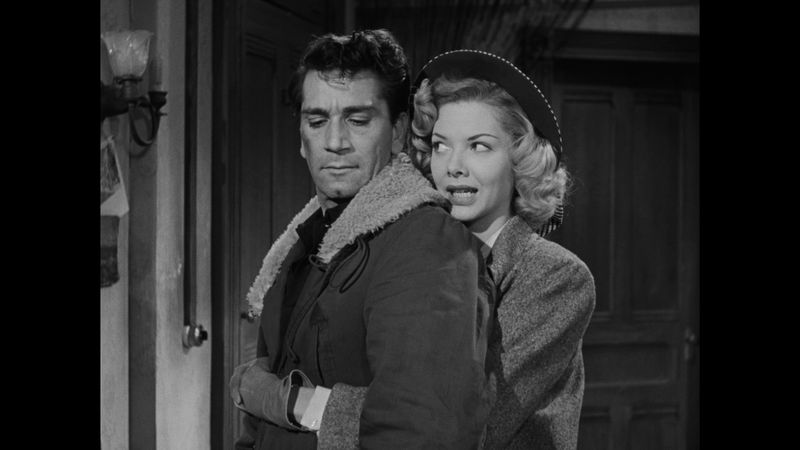Film noir, with its dark and moody aesthetic, became an iconic genre during the 1940s. Characterized by its cynical heroes, stark lighting effects, and complex plots, these films captured the complexities of human nature like no other. This era introduced audiences to a world of crime, mystery, and moral ambiguity, with stories that were as captivating as they were thought-provoking. The following is a list of 19 of the best film noir movies from the 1940s, each one a masterpiece in its own right, showcasing the genre’s unique style and storytelling techniques.
The Maltese Falcon (1941)
“The Maltese Falcon,” directed by John Huston, stars Humphrey Bogart as the iconic detective Sam Spade. This film is a cornerstone of the film noir genre, offering a rich tapestry of mystery and intrigue. Bogart’s portrayal of Spade is both charismatic and hard-edged, capturing the essence of a world-weary detective.
The plot revolves around a valuable falcon statuette and the web of deceit surrounding it. The film’s sharp dialogue and intricate plot make it an engaging watch, while its atmospheric cinematography sets the standard for future noir films.
Double Indemnity (1944)
“Double Indemnity,” directed by Billy Wilder, is a classic film noir that expertly weaves a tale of greed and betrayal. Fred MacMurray stars as an insurance salesman who gets ensnared in a murder plot by the alluring Barbara Stanwyck.
The film explores themes of moral ambiguity and the consequences of lust and greed, set against the backdrop of shadowy urban landscapes. Its tight narrative and sharp dialogue have made it a timeless piece, exemplifying the tension and suspense that film noir is known for.
Laura (1944)
Otto Preminger’s “Laura” is a mesmerizing film noir that delves into the world of obsession and mystery. The story follows Detective Mark McPherson as he investigates the murder of the enchanting Laura Hunt.
The film is renowned for its haunting score and sophisticated cinematography, which create an atmosphere of intrigue. As McPherson becomes infatuated with Laura’s portrait, the line between reality and illusion blurs, making “Laura” a captivating study of desire and deception.
Gilda (1946)
“Gilda,” directed by Charles Vidor, is a visually stunning film noir that stars Rita Hayworth in one of her most iconic roles. Set in a Buenos Aires casino, the film explores themes of love, jealousy, and betrayal.
Hayworth’s portrayal of the eponymous character is both captivating and enigmatic, embodying the allure and danger of the femme fatale archetype. The film’s lush visuals and intense performances make it a standout in the genre, with its famous musical number elevating Hayworth to cinematic legend.
The Big Sleep (1946)
Directed by Howard Hawks, “The Big Sleep” is a quintessential film noir that features Humphrey Bogart as private investigator Philip Marlowe. Based on Raymond Chandler’s novel, the film is renowned for its complex plot and witty dialogue.
As Marlowe navigates a labyrinthine case involving blackmail and murder, the film captures the essence of the genre with its moody lighting and urban setting. Bogart’s charismatic performance and the film’s intricate storytelling ensure its place as a classic in the noir canon.
Out of the Past (1947)
Jacques Tourneur’s “Out of the Past” is a masterful film noir that combines romance and mystery. Robert Mitchum stars as Jeff Bailey, a man trying to escape his dark past, only to be drawn back into a world of deceit.
The film’s nonlinear narrative and evocative cinematography create a haunting atmosphere, while Mitchum’s nuanced performance adds depth to his character. “Out of the Past” is celebrated for its storytelling and its exploration of fate and identity, making it a quintessential entry in the genre.
Kiss of Death (1947)
“Kiss of Death,” directed by Henry Hathaway, is a gripping film noir that explores themes of redemption and betrayal. The film stars Victor Mature as Nick Bianco, an ex-con navigating the treacherous world of crime and justice.
The standout performance by Richard Widmark as the chilling Tommy Udo elevates the film, making it a memorable piece of cinema. Its tense courtroom scenes and gritty urban settings are exemplary of the noir aesthetic, highlighting the struggle between good and evil.
Crossfire (1947)
Edward Dmytryk’s “Crossfire” is a compelling film noir that tackles social issues within its crime narrative. Starring Robert Mitchum and Robert Young, the film investigates a murder tied to anti-Semitic motivations.
The film’s bold exploration of prejudice and its strong performances make it a significant piece in the noir genre. Its stark lighting and tense atmospheres underscore the moral complexities faced by its characters, offering a thought-provoking and engaging viewing experience.
The Naked City (1948)
Directed by Jules Dassin, “The Naked City” offers a gritty and realistic portrayal of crime in New York City. The film’s documentary-style approach sets it apart, providing an authentic glimpse into the urban landscape.
As detectives unravel a murder case, the city’s vibrant life is captured with stunning detail. The film’s innovative use of real locations and its emphasis on the city’s character make it a standout in the noir genre, showcasing both the allure and danger of urban living.
They Live by Night (1948)
Nicholas Ray’s “They Live by Night” is a poignant film noir that explores themes of love and desperation. The film follows two young lovers on the run, portrayed by Farley Granger and Cathy O’Donnell.
Their journey through a bleak landscape highlights the struggle for freedom and belonging. Ray’s empathetic direction and the film’s emotional depth provide a fresh take on the noir genre, focusing on the human element amidst the crime and chaos.
Key Largo (1948)
“Key Largo,” directed by John Huston, is a thrilling film noir set in a storm-swept Florida Keys hotel. Humphrey Bogart stars as Frank McCloud, a war veteran caught in a standoff with a ruthless gangster, played by Edward G. Robinson.
The film’s claustrophobic setting and tense atmosphere create a gripping narrative, while the powerful performances and moral dilemmas faced by the characters enhance its impact. “Key Largo” remains a compelling exploration of courage and conviction in the face of danger.
Force of Evil (1948)
Directed by Abraham Polonsky, “Force of Evil” is a film noir that delves into the corrupting influence of power and money. John Garfield stars as a morally conflicted lawyer caught in the dangerous world of illegal gambling.
The film’s sharp dialogue and stark visuals underscore the tension between ambition and ethics. Its exploration of flawed characters and the societal impact of corruption make it a thought-provoking entry in the noir genre, resonating with themes of personal and systemic greed.
The Big Clock (1948)
“The Big Clock,” directed by John Farrow, is a suspenseful film noir that intricately weaves a tale of time and tension. The story follows George Stroud, portrayed by Ray Milland, who becomes embroiled in a murder investigation within his own publishing company.
The film’s clever use of time as a narrative device and its atmospheric setting create a sense of urgency and claustrophobia. Its gripping plot and strong performances make “The Big Clock” a standout example of the genre’s ability to blend suspense with psychological depth.
The Third Man (1949)
Carol Reed’s “The Third Man” is a quintessential film noir, renowned for its distinctive style and memorable score. Set in post-war Vienna, the film stars Joseph Cotten as Holly Martins, a writer entangled in a web of intrigue and deception.
The film’s atmospheric cinematography, featuring striking use of shadows and light, enhances its mystery and tension. Orson Welles’ portrayal of the enigmatic Harry Lime remains iconic, making “The Third Man” an enduring classic that captures the essence of noir storytelling.
Criss Cross (1949)
“Criss Cross,” directed by Robert Siodmak, is a gripping film noir that delves into themes of love and betrayal. The film stars Burt Lancaster as Steve Thompson, a man caught in a dangerous heist with his former lover.
Its intricate plot and tense atmosphere are heightened by Siodmak’s skillful direction and the strong performances of its cast. The film’s exploration of fate and double-crosses adds depth to its narrative, making “Criss Cross” a captivating entry in the noir genre.
White Heat (1949)
Raoul Walsh’s “White Heat” is a powerful film noir centered around the volatile criminal Cody Jarrett, played by James Cagney. The film explores themes of loyalty and madness, set against the backdrop of crime and punishment.
Cagney’s intense performance and the film’s sharp dialogue create a compelling narrative, while its iconic climax solidifies “White Heat” as a standout in the genre. Its exploration of a criminal’s psyche offers a unique perspective on the consequences of a life of crime.
Gun Crazy (1949)
Directed by Joseph H. Lewis, “Gun Crazy” is a film noir that examines the lure of danger and the thrill of crime. The film follows a couple, played by John Dall and Peggy Cummins, who embark on a crime spree fueled by their obsession with guns.
Its innovative cinematography and dynamic pacing create a sense of urgency and excitement. The film’s exploration of the psychological aspects of crime and its impact on relationships make it a thought-provoking addition to the noir tradition.
The Set-Up (1949)
Robert Wise’s “The Set-Up” is a gritty film noir that delves into the world of boxing and the corruption within it. The film stars Robert Ryan as Stoker Thompson, an aging boxer facing the fight of his life.
Its real-time narrative and intense atmosphere create a gripping portrayal of a man’s struggle against overwhelming odds. The film’s exploration of ambition, defeat, and dignity adds emotional depth, making it a poignant and powerful entry in the noir genre.
Thieves’ Highway (1949)
Directed by Jules Dassin, “Thieves’ Highway” is a film noir that explores the cutthroat world of produce trucking. Richard Conte stars as Nick Garcos, a man seeking justice for his injured father in a corrupt industry.
The film’s realistic setting and tense narrative highlight the struggles of ordinary people caught in unethical practices. Its strong performances and moral undertones make “Thieves’ Highway” an engaging and thought-provoking piece, illustrating the noir theme of the individual’s fight against systemic corruption.
